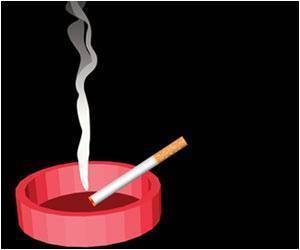
‘Exposure to second hand smoke from marijuana reduces the function of arteries by compromising the dilation. This impedes the blood flow and creates long-term problems.’
Tweet it Now
The blood vessels can carry more blood if they sense that they need to pass more blood to the tissues. As a result, they dilate to allow more blood through. But that’s inhibited by exposure to smoke.Previous work by Springer and others has shown that as little as one minute of exposure to tobacco SHS diminishes FMD, but the effects of marijuana SHS hadn’t been examined. In the new research, published online in the Journal of the American Heart Association, a team of scientists in Springer’s laboratory measured rats’ FMD, which works similarly to FMD in humans, before and after exposure to both tobacco SHS and marijuana SHS.
The researchers found that rats exposed to marijuana SHS experienced a more than 50% reduction in FMD, similar to the reduction in artery function seen in both rats and humans exposed to tobacco smoke in previous studies. As with tobacco, the reduction occurred after just one minute of exposure to SHS from marijuana. When rats inhaled secondhand marijuana smoke for one minute, their arteries carried blood less efficiently for at least 90 minutes, whereas similar exposure to secondhand tobacco smoke caused blood vessel impairment that recovered within 30 minutes. Though the effect is temporary for both cigarette and marijuana smoke, it can turn cause long-term problems if exposure occurs frequently.
The research group used equipment designed to mechanically smoke cigarettes and fill a reservoir with the resulting smoke. In a series of experiments using marijuana ciagarettes, when the smoke in the collecting chamber was determined to be at a level roughly comparable to those found in restaurants that allow smoking, the rats were exposed to the marijuana smoke.
Using methodology that they developed for previous tobacco studies, the researchers temporarily blocked off blood flow to rats’ legs after they were exposed to SHS. They then let the blood rush back into the arteries and used ultrasound technology to measure the resulting widening of the femoral artery, a vessel similar to the human brachial artery of the arm, where flow-mediated dilation is typically measured in clinical studies.
Advertisement
“The biggest reason that people believe marijuana second-hand smoke is harmless is because the public health community hasn’t had direct evidence of its harmful effects like it does with tobacco,” Springer said. “We hadn’t done the experiments, so I think there is definitely an underestimation of how harmful marijuana smoke is.”
Advertisement
“It was really interesting to me, and distressing, because all these people in the stands would not tolerate it if the person next to them started smoking a cigarette,” Springer said, “but they were fine with the marijuana.” he added.
The medicinal use of marijuana complicates such public policy questions, Springer said, but he believes the current study solidifies the evidence that exposure to marijuana SHS carries risks.
Smoke from any burning source contains large amounts of harmful chemicals, even if it's from a naturally grown plant like tobacco or marijuana, said Dr. David Friedman, chief of heart failure services at Northwell Health Long Island Jewish Valley Stream Hospital in Valley Stream, N.Y.
“At this point, we’re saying that inhaling any smoke is detrimental to your health," Springer said. “I think that people should avoid inhaling smoke whether it’s from tobacco or marijuana cigarettes, forest fires, barbecues, just avoid smoke,” he added. To protect their own health, pot users should consider switching to edible marijuana products, Springer said. Using an e-cigarette leaf vaporizer also could be a safer alternative, but that needs to be tested.
Springer agreed that the new study doesn't directly prove harm in humans, but noted it has been established that rat circulatory systems have enough similarities with those of humans to make them useful in the laboratory. The study was funded by the National Institutes of Health’s National Institute on Drug Abuse, and the Elfenworks Foundation.
Source-Medindia















